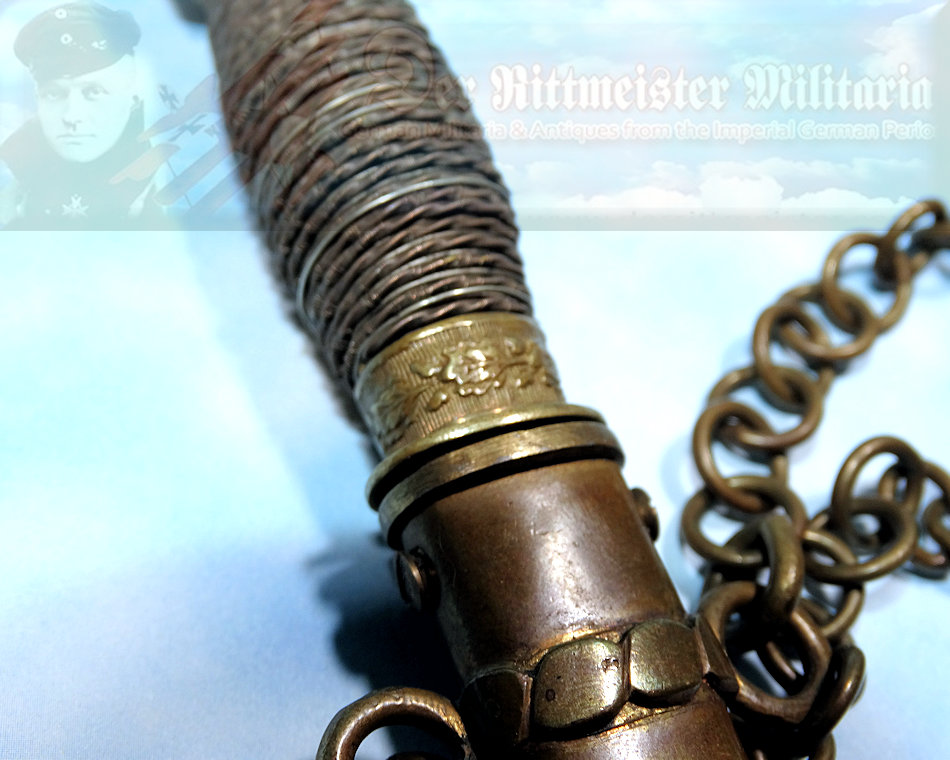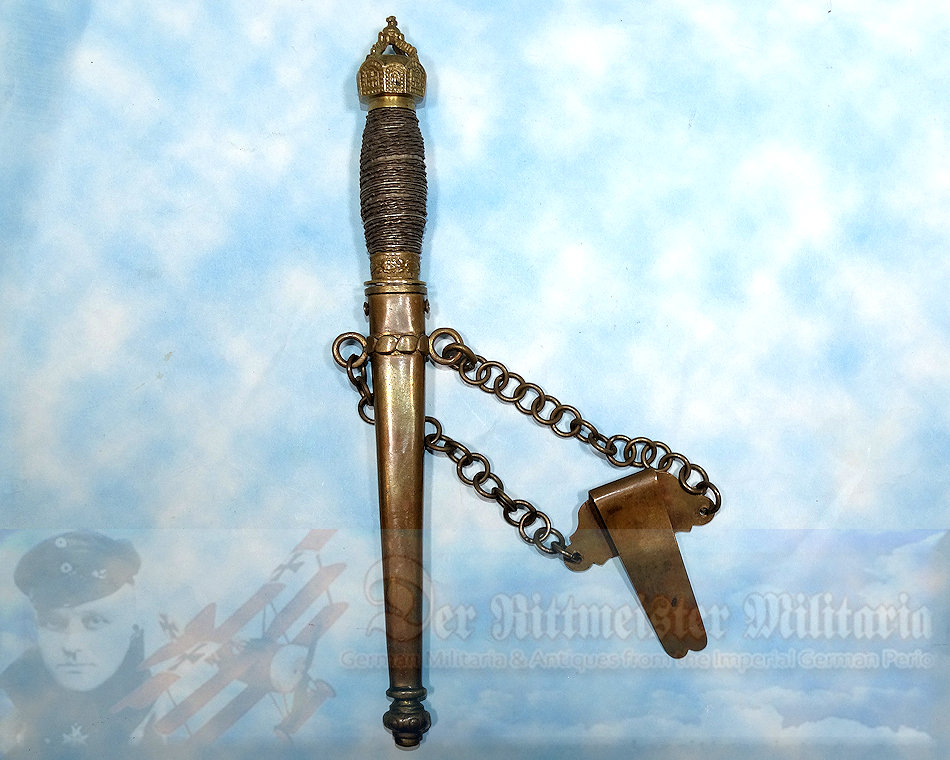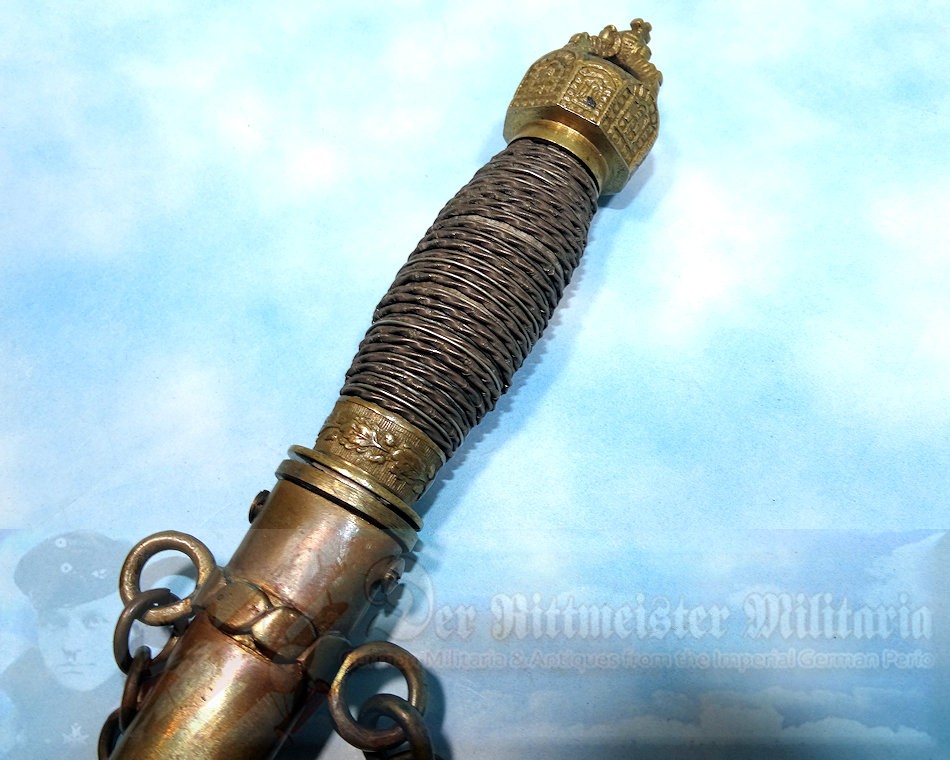Description
DAGGER – NAVY – REICHSMARINE – PRODUCED ABOARD SHIP.
Following WW I’s end, in 1919 the Kaiserliche Marine became the ReichsMarine, which it remained until it was replaced by the Kriegsmarine on 1 Juni 1935. Officers continued to carry a dagger (dolch) for certain occasions. The daggers were similar in many instances. The biggest difference was that their grips were black, (perhaps in mourning for the Kaiserliche Marine’s end). Officers could choose to retain the Kaiser Crown at their daggers’ tops, or they could choose another pommel-style that indicated the ReichsMarine. In some cases, the officer filed off the cross that appeared atop his Kaiserliche Marine dagger’s crowned pommel as an act of protest.
Today we are offering a unique ReichsMarine dagger. The man who sold it to me was of the opinion that this dagger was Bordfertigung (fabricated onboard a German ship). Obviously, to produce a dagger such as this one, its creator must have been highly-skilled in a machine shop!
I am of the opinion that the Kaiser Crown was NOT machined in the shop, but was original to a dagger. It appears identical to examples I have seen in the past. I cannot believe that this part of the dagger could have been created onboard the ship. It actually screws off just like it would on a naval dagger. The grip, however, most certainly was fashioned in a machine shop. It lacks the typical ivory or walrus tusk handle. It is wrapped loosely by two different kinds of wire. Whereas a traditional dagger would have one SINGLE wire wrap on its grip, this appears to many. A ring of laurel leaves appears below that.
The dagger measures 9” in length from the tip of its crown to the bottom of its scabbard. It is clearly much shorter than a traditional naval dagger. When pulled from the scabbard, the blade measures 4 ¼” in length. The scabbard itself measures a total of 7 ½” in length. Two rings appear on opposite sides of the scabbard. A metal chain is attached to each ring. The chain is attached to a brass clip that would have allowed the dagger to be slipped onto a belt. This arrangement replaced a normal set of hangers that attached to the dagger and the officer’s belt.
The dagger’s blade is unadorned and shows signs of wear where it has been removed from the scabbard. This is a very clever and well done piece of what could be considered a type of “trench art.”
If you are looking for an interesting piece to display with a regular naval dagger or other naval items, you will find it a worthy addition to your collection. Quite frankly, I have never seen anything quite like it. It may well be in the “one-of-a-kind” category.








